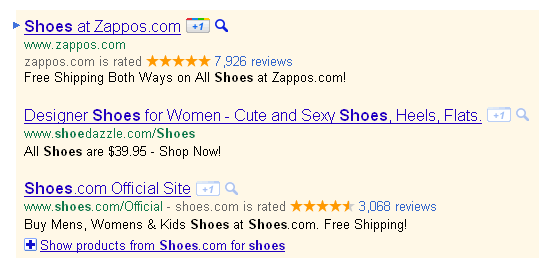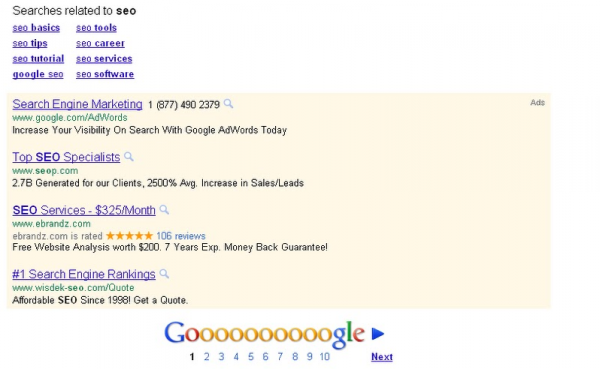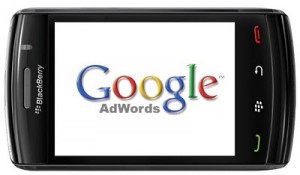I’ve been seeing the Google +1 button appearing on more and more websites since it was released a few months ago. Recently, I’ve even seen it as an option for paid search ads.
If I perform a search while signed into my Google account, the +1 button appears as a part of the actual PPC ad.
 This seems to be the exact same thing as giving users the ability to “Like” an ad in Facebook. However, Facebook is built around the idea of social sharing. You would “Like” an ad because of the brand or product it represents, knowing that your friends will see that you are a fan. It seems like a shortcut of sorts for Facebook users wanting to share that they “like” something without having to leave the page they are on and track down the actual business page.
This seems to be the exact same thing as giving users the ability to “Like” an ad in Facebook. However, Facebook is built around the idea of social sharing. You would “Like” an ad because of the brand or product it represents, knowing that your friends will see that you are a fan. It seems like a shortcut of sorts for Facebook users wanting to share that they “like” something without having to leave the page they are on and track down the actual business page.
I’m not sure if many people use Google’s search engine in the same way. Personally, I use it to find information, not to recommend a company/brand/product to my social circle. If I were to click the +1 next to a PPC ad, my Google contacts would see that notation if they performed a similar search while also signed in. Also, Google will show the +1 when the clickthrough URL for the ad matches a website that one of your friends has “+1”’ed.
Google makes it clear that the +1 button does have an impact on your organic rankings, regardless of whether they come from a PPC ad or your organic listing. As long as the URL of your PPC ad matches the URL of the organic listing, +1’s will show on both results. The company also notes that while +1’s will affect your organic search ranking, they will not change Quality Score or ad ranking. However, the most important component of Quality Score is Click-Through Rate (CTR) and I suspect that the primary reason that Google is testing this functionality in PPC ads is that they believe (as I do) that when a user sees a +1 from a trusted source, they will be more likely to click on the ad—increasing CTR, Quality Score, and Google’s ad revenue.
What do you think? Is Google trying to make +1 just like the Facebook Like button, or is there real value/usage for people clicking the +1 button on a PPC ad?



